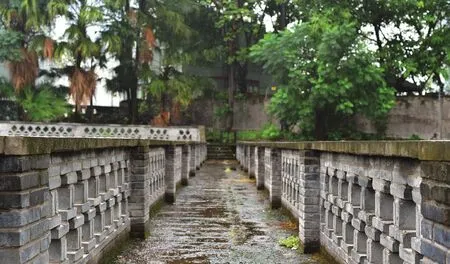曾经,两万挑水夫穿行在重庆城
2018-11-21
◇ 文 |本刊记者 图 |
驱车从南岸经石板坡长江大桥往渝中区方向,抬头就能在一片郁郁葱葱的树林中看到一个露出山脊的欧式尖顶——打枪坝水塔。
它是重庆第一座自来水厂,已有80多年历史,依旧完好无损地矗立在净水池一侧,见证着重庆近代公共事业的发展。
Driving from the South Bank, passing the Shibanpo Yangtze River Bridge and looking to the Yuzhong District, you can see a European-style spire with a ridge in the lush woods--Water Tower of Shooting Dam.
It is the first water supply plant in Chongqing,with the history of 80 years. It still stands on the side of the clear water reservoir, and witnesses the development of modern public utilities in Chongqing.
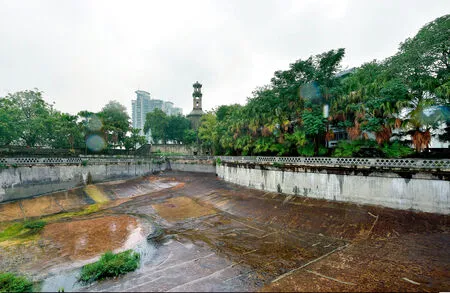
曾经的“面对两江水,家家愁吃水”
“Every Family Was Worry about the Water Supply even in the Face of Yangtze River and Jialing River”
旧时,在重庆民间有条顺口溜,“进了重庆城,山高路不平,面对两江水,家家愁吃水。”
顺口溜大致讲的意思是,重庆因为地形原因,虽守着长江和嘉陵江,市民用水却十分困难。
长期以来,因缺乏地下水资源,重庆除极少地方用井水外,绝大多数老百姓喝的都是由人力挑运的江水。这也使得重庆形成了一个特殊行业——挑水夫。
“挑夫卖的水,有浑有清,平时嘉陵江的水清亮些,上半城的人买的多,下半城的人多吃长江水,就要浑些。一到洪水时节,两条河的水一样浑。大家一般采取沉淀的方式,让水中泥沙自然沉淀,或者用白矾沉淀。也有采用沙缸过滤的方式取清亮水。”重庆文史专家肖能铸对老重庆饮水颇有研究。
吃用的水虽说困难,但毕竟用得不多。一旦发生火灾,没有水灭火便是灭顶之灾。
老重庆城的建筑大部分用的都是木竹,且房屋建筑依山就势,重重叠叠。一旦发生火灾,就会火烧连营。
《巴县志》曾记载了清朝至民国时期的多次火灾:“(1919年)一月大火,自夜初更起,达旦方熄。火起于较场口荒货街,延烧较场口、百子巷、走马街、黄土坡、十八梯、等处被灾者数千家。”
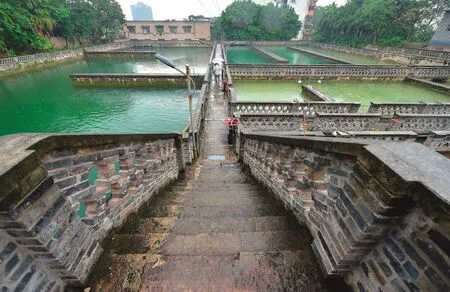
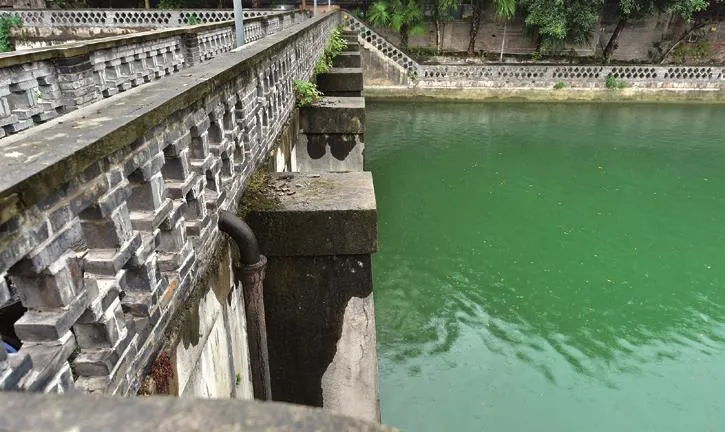
In the old days, there was a doggerel in Chongqing.“After steeping into Chongqing, you would find that the mountains are so high and the roads are so rugged, every family was worry about the water supply even in the face of Yangtze River and Jialing River. ”
The general meaning of doggerel is that due to the topography of Chongqing, although the Yangtze River and the Jialing River wind, it is very difficult for the citizens to have tap water.
For a long time, due to the lack of groundwater resources, the vast majority of ordinary people drank river water that was carried by labors except that some places still drank well water. This also facilitated the formation of a special industry in Chongqing-- water carrier.
“The water sold by the water carriers was both clear and muddy. The water in the Jialing River was clearer, so people in the upper part of the city buy the water from Jialing River. And the water in the Yangtze River was more muddy, so people in the lower part of the city buy the water from the Yangtze River. When the flood season came, both waters of the two rivers were muddy. Everyone generally adopted the sedimentation method to allow the sediment in the water to be precipitated naturally or precipitated muddy water with white peony. The clear water can also be taken through sand filter.”Xiao Nengzhu, a Chongqing history expert has conducted several studies on the water supply in old Chongqing.
Although the water for using and eating was difficult to obtain, people didn’t consumed to much water. In the event of a fire, it would be a catastrophe if there is no water to extinguish.
Most of the buildings in the old Chongqing were made of wood and bamboo, and the overlapped buildings were built near the mountains. So the fire would spread naturally.
Annals of Baxian Countyrecorded many fire accidents occurred from the Qing Dynasty to the period of the Republic of China.“In 1919, a fire in January which occurred at nightfall was even extinguished until the next early morning. The fire started from the Huanghuo Street of the Jiaochangkou, and spread to Jiaochangkou, Baizi Lane, Zouma Street, Huangtupo, and the Shibati Street. This fire accident caused damage to thousands of families. ”
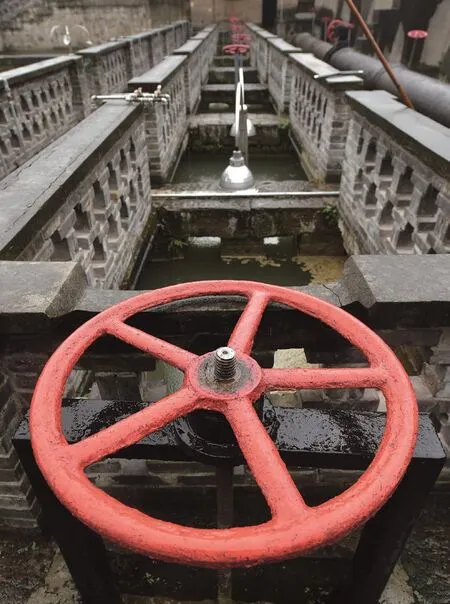
以水命名的水市巷
Water Fair Lane Named after Water
虽然缺水,重庆人也想出了不少对付火灾的办法,比如在街道上修筑消防储水池,包括大熄火池、小熄火池等。
现在的七星岗,就是以前用来灭火的七口按北斗七星排列的大石缸——七星缸讹传而来。水缸里的水,部分是雨水和井水,而更多的,是由人工挑水补充。
那个年代,水在重庆居然是稀缺资源,自然形成了卖水的市集。
在清朝张云轩所绘的《重庆府治全图》中,就有关于水市巷的记载,地点就在如今渝中区中华路小学附近。
“这是文字资料中第一次有关于水市巷的记载。从地图比例看,水市巷的长度约为300~500米,以水命名的市集,这在全国都是少见的。我推测,当时重庆的挑水贩卖行业非常成熟。”渝中区文管所研究部主任张嵩说,“史料中也有记载,明末清初,重庆城挑水夫从业者约有6000人,到20世纪初,从业者已达2万人。”
Despite the lack of water, Chongqing people had come up with many ways to deal with fires, such as building fire cisterns on the streets, including large quenching pools and small quenching pools.
The current Qixinggang was a big stone tank set according to the arrangement of the Big Dipper to extinguish the fire. The water in the tank was partly rainwater and well water, and also was supplemented by water carriers.
At that time, water was a scarce resource in Chongqing, and a market for selling water was formed naturally.
In the Full Map of Chongqing painted by Zhang Yunxuan of the Qing Dynasty, there was a Water Fair Lane located near the Zhonghua Road Primary School in Yuzhong District.
“This is the record about the Water Fair Lane in a literal data for the first time. According to the map scale, the length of the Water Fair Lane is about 300~500 meters, and the fair named after the water was rare throughout the country. So I speculate that Chongqing's water-selling industry was very mature at that time.”Zhang Song, director of the Research Department of Yuzhong District Cultural Management Institute, said,“According to the historical data, in the late Ming and early Qing dynasties,there were about 6,000 water carriers in Chongqing,and by the beginning of the 20th century, the number of water carriers had reached 20,000. ”
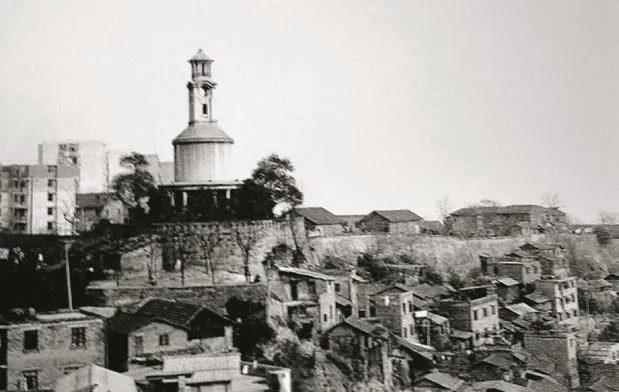
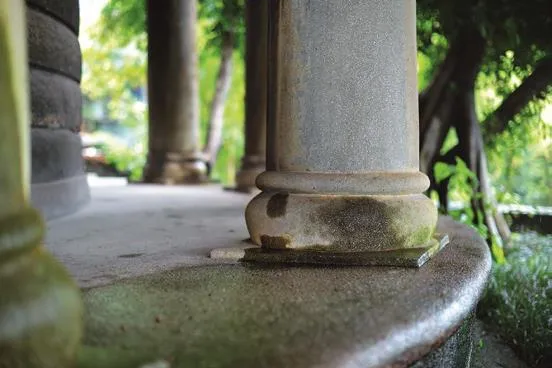
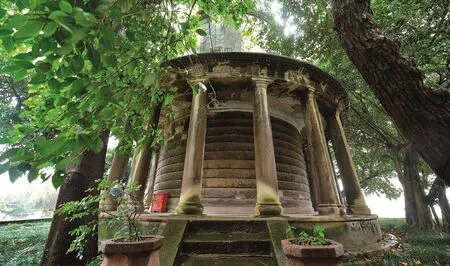
自来水厂曾经印在钞票上
The Water Supply Plant Was Once Printed on the Banknote
上个世纪20年代初,潘文华任重庆商埠督办公署督办,为了解决多年来居民生活用水的困难和火灾问题,他决定兴建一座自来水厂。
为利用地形优势供水,自来水厂的厂址选在老重庆城的最高点——打枪坝。
打枪坝水塔原是清代设立的驻军炮台,坝子宽阔,官兵常在此演练射击,故有此名。
1929年2月,打枪坝水厂动工,由获得过德国国家工程师称号的税西恒规划设计。1932年,打枪坝水厂及水塔建成,并试行向城区通水,1934年2月实现正常供水。
由此,重庆乃至四川第一座自来水厂诞生。
打枪坝水厂建立之初,大约能为25~30万人口供水,供水能力达到每人每天300公升。在打枪坝还建有5个过滤水池,每个水池每天能够过滤原水10000吨,完全能够满足当时整个重庆城的饮水问题。
现在,打枪坝水厂成了渝中区自来水厂的一个车间,当年建造的沉淀池等部分设施经过维护,仍在为朝天门、储奇门附近16万居民供水。
如今,我们依然能在重庆中国三峡博物馆馆藏的民国钞票上看到自来水厂的身影。那是一张在1937年由“中国农民银行”发行的伍圆钞票。它与普通横向的钞票不同,是竖向排版,钞票正面的图案便是打枪坝水厂纪念塔。
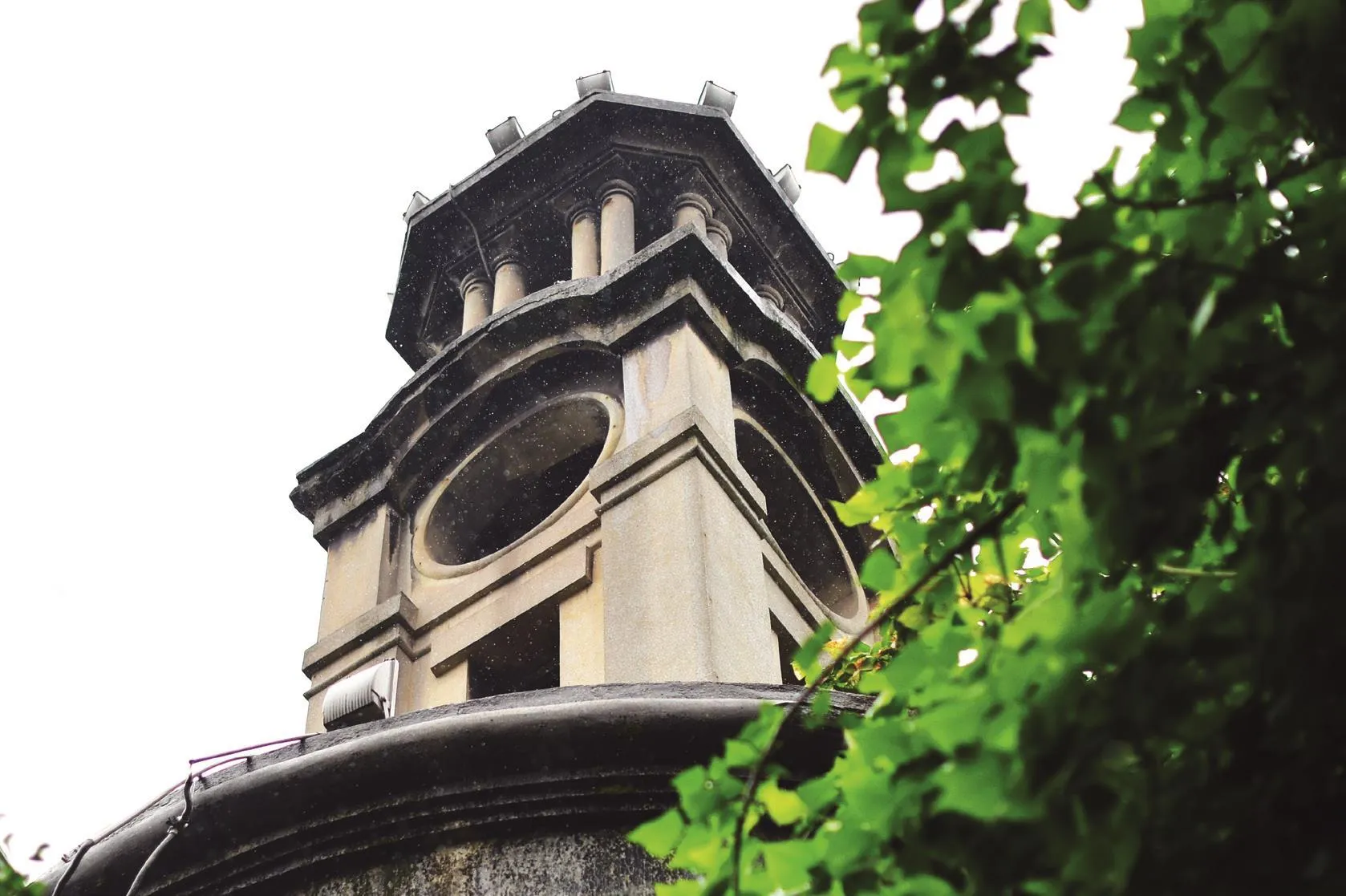
In the early 1920s, Pan Wenhua was appointed as the supervisor of the Chongqing Commercial Supervision Office. In order to solve the difficulties of water supply and fire accidents over the years, he decided to build a water supply plant.
In order to use the terrain advantage to supply water, the site of the water supply plant was selected at the highest point of the old Chongqing--the Shooting Dam.
The water tower of the Shooting Dam was originally a fort barbette set up in the Qing Dynasty, with spacious field for the officers and men to practice shooting here. So the dam was named after the practice of shooting by officers and men.
In February 1929, the construction of the Shooting Dam water supply plant was started, and Shui Xiheng who was awarded the title of German National Engineer was responsible for planning and designing. In 1932, the Shooting Dam water supply plant and water tower were built well, and tried to supply water to the city. In February 1934, normal water supply was realized.
Thus, the first water supply plant in Chongqing and even Sichuan was born.
Since the establishment, the Shooting Dam can supply water for about 250,000 to 300,000 people,and the water supply capacity can reached 300 liters per person per day. There are also five filter tanks around the Shooting Dam, each of which can filter 10,000 tons of raw water per day, which can fully meet the drinking water of the entire Chongqing at that time.
At present, the Shooting Dam water supply plant has become a workshop in the waterworks of Langzhong District. Some facilities such as the sedimentation tanks built in that time have been maintained and are still supplying water to 160,000 residents near Chaotianmen and Chuqimen.
Today, we can still see the water supply plant on the banknotes of the period of the Republic of China in the Chongqing China Three Gorges Museum. It was a banknote with the face value of five yuan issued by the“Farmers Bank of China”in 1937. Unlike ordinary banknotes typeset horizontally,it was typeset vertically. The front of the banknote showed the Shooting Dam water tower.
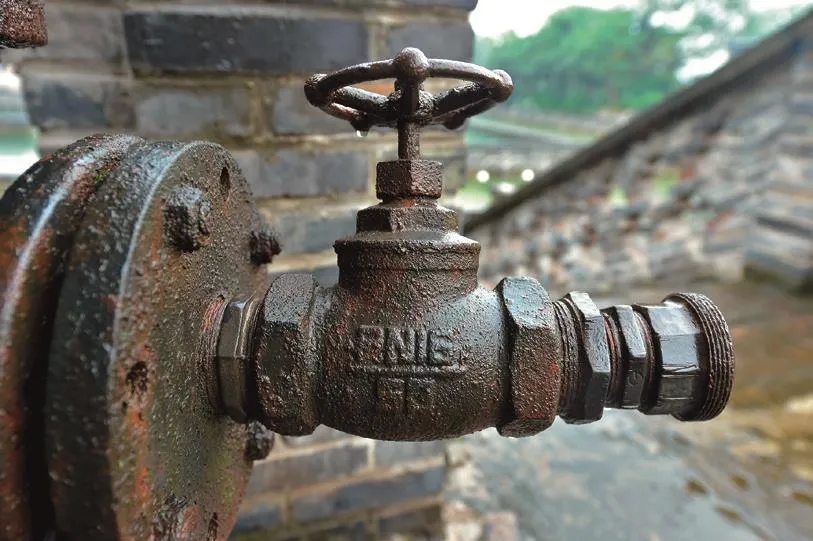
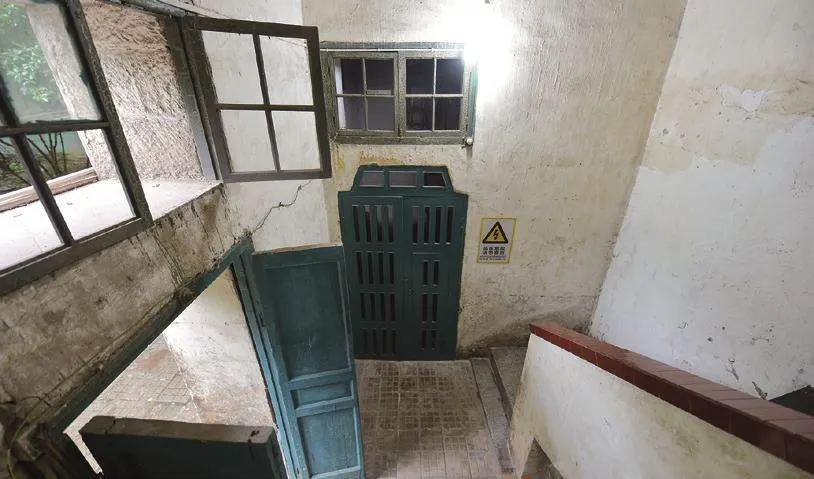
消失的挑水工
Vanishing Water Carriers
自来水厂建成后,挑水夫这项职业却并未消失。
打枪坝水厂的整个供水工程,由大溪沟设起水站,把嘉陵江水抽到打枪坝,在打枪坝设立制水区,再经南、中、北三条管道将水送到城内各处。
那时候,由于水表、水管都是欧洲进口的,一个水表的价格比一个水管安装工一年的工资都高,只有有钱人才负担得起单独立表用水。打枪坝水厂曾有过记载:“若申请立表,则需要银元100元。”
为了方便百姓用水,水厂便在自来水流经的领事巷、管家巷、蔡家石堡、十八梯、回水沟及小什字沿线设立了公用水站。
居民购买“售水证”,再到水站换水。或者由“担水工”专门到自来水站挑水,再到家家户户售卖。
上世纪60年代,当时还是少年的肖能铸就曾亲身经历重庆老百姓饮水的日常。
肖能铸家住渝中区百子巷,他回忆道:“水站的装备很简单,有两个自来水龙头。家里有劳动力的就自己挑,家里没劳力的只有请人挑。小时候,我们巷子里有一个专门挑水的彭大爷,我印象很深。因为常年挑水,他的腿上静脉曲张非常严重,筷子那么粗细,这是挑水工普遍的职业病。”
“挑水工每挑一担水一分钱,价格一直没变,直到上世纪70年代末,水站逐渐取缔后,挑水工这个职业才逐渐消失。”肖能铸不无感慨。
After the water supply plant was completed, the water carriers did not disappear.
Regarding the entire water supply project of the Shooting Dam water supply plant, a water-supply station was set up in Daxigou, the water from the Jialing River was then pumped to the Shooting Dam,a water production area was set up in the Shooting Dam, and then the water would be supplied to the city through the three pipelines in the south, middle and north directions.
At that time, since the water meters and water pipes were all imported from Europe, the price of a water meter was even higher than that of a pipe installer for one year. Only rich people could afford a single independent meter. According to the records about the Shooting Dam water supply plant:“If you apply for installing a water meter, you need to pay 100 yuan. ”
In order to facilitate the use of water for the ordinary people, the water plant has set up public water stations along the Lingshi Lane, Guanjia Lane, Caijiashibao, Shibati Lane, Huishuigou and Xiaoshizi.
Residents could buy a“Water Sales Certificate”and then exchange water in the water station.Or, the“water carriers”would go to the water stations to pick up the water and then sell the water to every household.
In the 1960s, Xiao Nengzhu, who was still a teenager, had personally experienced the daily life of drinking water in Chongqing.
Xiao Nengzhu lived in Baizi Lane, Yuzhong District. He recalled:“The equipment at the water station was very simple. There were only two taps at the water station. If there was a labor force at home,people can carry water themselves. If there was no labor force at home, people only asked someone to carry water with compensation. When I was young,there was a Uncle Peng who always carried water in the lane where I lived. I was very impressed. Because he carried the water all the year round, the varicosity on his legs was very serious. The veins on his legs were thick as chopsticks, which was a common occupational disease for water carriers. ”
“People needed to pay one cent to the water carrier for a bucket of water, and the price maintained unchanged. Until the end of the 1970s, after the water station was gradually banned, the profession of water carriers gradually disappeared.”Xiao Nengzhu sighed with emotion.
